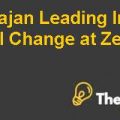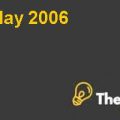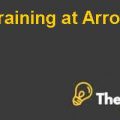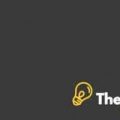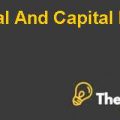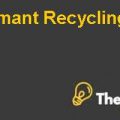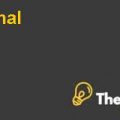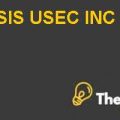Bidding for Hertz: Leveraged Buyout Case Study Solution
Key Assumptions and its Impact on Returns:
The key assumptions mentioned in the Exhibits 8, 9 and 10 are very realistic given the slowdown in the rental market, in which Hertz operates its projected performance as a result. The assumptions with the largest impact are the 4.5% slow growth in the car-rental and its stabilization at that rate, as well as the stabilization of the equipment rental growth at a rate of 3%.
Based on Terminal Value, the Expected Return Estimates:
The assumptions of lower growth rate in revenues have a direct relation with the expected return of the shareholders. If the expected growth rate of revenues will be lower, it will reduce the expected return of shareholders. Based on the estimations that are defined in the case exhibits 8, 9 and 10 along with the calculations of terminal value and terminal growth rate, the expected return of shareholders are found 18.8 percent, which are considered normal from this investment. The calculations of terminal growth rate is totally based on the estimations that are provided in case exhibits by considering the year 2005 as the base year.
Target Return of 20%:
Since, Carlyle has desires for the 20 percent ROI, as it is suggested by the analysis that $2.3 billion are quite enough for the 20 percent return, due to the fact that the return on investment tend to be based on the incremental changes in revenues and savings in operational cost. Such new policies and strategies have been proposed in an attempt to increase the revenues, so that the higher upfront equity investment would not last impact on the generated return. Consequently, the company should provide the reasonable equity investment that would most likely generate the reasonable return for the shareholders.
Market Required Rate of Return:
The market required rate of return for this investment is 13.47 percent, while the expected rate of return of shareholders for this investment is 18.8 percent. The reason for this difference is more tax payments than expected.
Value of Hertz and its Receiving to Equity Group:
The value of Hertz by using the equity residual method of valuation is 2,300 thousands of dollars, while the amount in dollars that Ford Motor Company is expecting to receive by pursuing the Initial Public Offering (IPO) process against the acquisition from private equity group is 5,683 thousands of dollars, which are shown in Exhibit 2.
Conclusion:
To sum up, it is to conclude that the dual track process is adopted with the intent of selling the Hertz Corp. The strategic decision that includes increasing in length of the rental, would most likely increase the overall segment revenues. The company has used the estimated growth rates for the projection purpose, there is a realistic direct operation expense, but the company has recognized the fleet interest in estimated financials for the forthcoming years.
The adaptability skills of the management as well as the deep understanding or knowledge about industry have made the team competitive in the marketplace. The predictable cash flows and steady cash flows have significantly increased the chances of ease in repayment of principle and interest of the debt obligations. The company has impressively attracted the debt finance due to the strong tangible assets, since these assets has exceptional second hand market for the lenders and bank. The new plan would make the bidding process more challenging or difficult for the company since it has gathered more data and information for the purpose of executing that strategy or process...............
This is just a sample partical work. Please place the order on the website to get your own originally done case solution.

